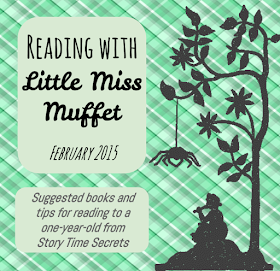Preschoolers and school-aged kids love to play guessing games. These picture books provide lots of fun opportunities to make guesses and find out if they're right.
Eggs 1 2 3: Who will the Babies Be? by Janet Halfmann, illustrated by Betsy ThompsonThis lift-the-flap book shows readers various birds' eggs, inviting them to guess who the babies will be when the eggs hatch.
Guess What I’ll Be by Ann Axworthy
On each spread, four clues and a peephole suggest to the reader what each creature will become when it grows up.
What’s Going on in There? by Geoffrey Grahn
In a strange neighborhood, nothing is as it appears. Silhouettes in the windows of the building indicate mundane goings-on, but the view from inside tells a totally different story.
Night Light by Nicholas Blechman
Lights of various colors and sizes appear as tiny holes in a field of black, then a page turn reveals the vehicle to which they belong.
 Who was Here?
Who was Here? by Mia Posada
Animal tracks left behind in mud, snow, and sand and rhyming text help the reader figure out who was here.
Do You Know Which Ones Will Grow? by Susan Shea, illustrated by Tom Slaughter
Fold-out flaps pose such questions as whether cubs grow to become bears or stools grow to become chairs. A great first lesson in living and non-living things.
Whose Shoes? by Stephen R. Swinburne
This book presents a series of photos of shoes and invites the reader to imagine what type of job the wearer might do.
Clothesline Clues to Jobs People Do by Kathryn Heling
By looking at clotheslines around the neighborhood, the reader figures out the job of each resident.
Spots, Feathers, and Curly Tails by Nancy Tafuri
Key features of farm animals appear on each page, and the child must guess each animal's identity.
The Foggy, Foggy Forest by Nick Sharratt
Who are these fairy tale friends in the foggy, foggy forest? Their shadows provide the clues.
Dancing Feet by Lindsay Craig, illustrated by Marc Brown
Listen to some fun beats and figure out which animal dances to each particular rhythm.
Guess Again? by Mac Barnett, illustrated by Adam Rex
This book provides silly rhyming riddles that lead readers to make logical guesses only to surprise them seconds later with totally ridiculous answers. This book never fails to make kindergartners laugh hysterically.
Spot the Plot by J. Patrick Lewis, illustrated by Lynn Munsinger
Rhyming poems provide clever clues to help the reader guess the names of favorite children's books. This book is most appropriate for kids in grades 3 to 5 who have read a lot of the titles mentioned.
 Look What I See! Where Can I Be? In the Neighborhood
Look What I See! Where Can I Be? In the Neighborhood by Dia L. Michels
A baby falls asleep in various modes of transportation, and each time he wakes up, he has to figure out where he is now based on what he can see around him.
Who Has These Feet? by Laura Hulbert, illustrated by Erik Brooks
Animals are shown from the ankles down and readers must guess who they belong to.


.png)
.png)

















